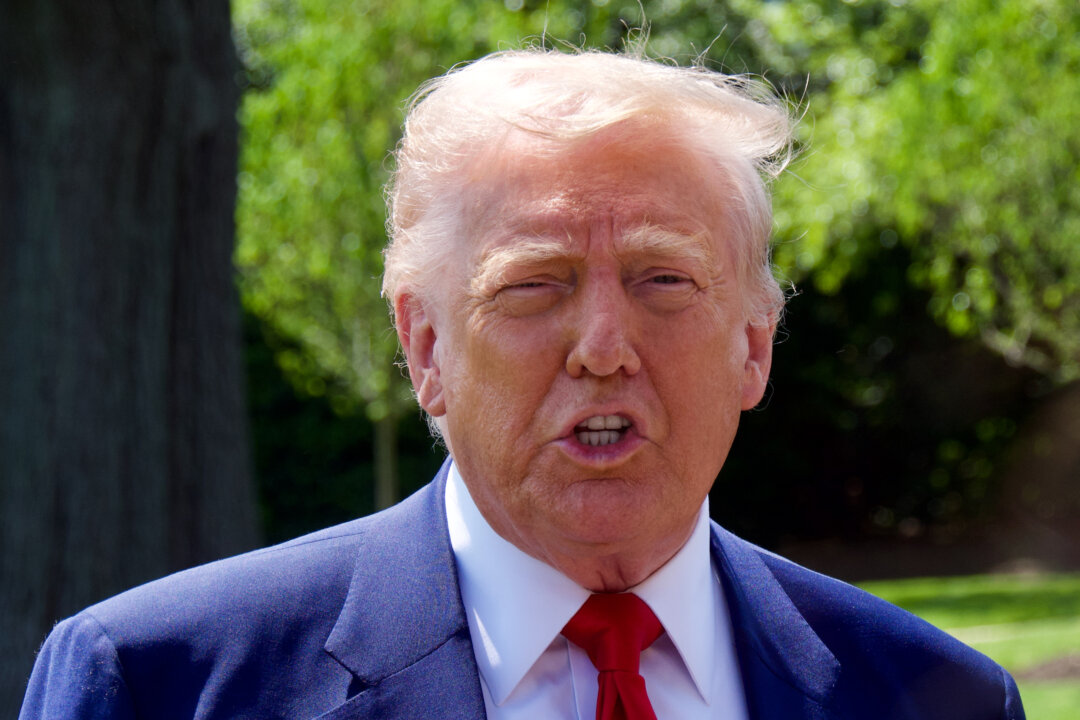Administration officials said negotiations are underway and could yield positive results to reduce trade barriers and tariffs.
WASHINGTON—President Donald Trump told reporters at the White House on Tuesday that potentially successful negotiations are underway with India regarding tariffs and trade, as his administration works on a strategic pivot to alleviate global trade tensions.
“India’s coming along great,” Trump said on the South Lawn before boarding Marine One on his way to Michigan for a rally celebrating his first 100 days in office. “I think we’ll have a deal with India.”
He said talks with Prime Minister Narendra Modi are yielding positive results.
The president used his first three months in office to aggressively reshape the nation’s foreign trade agreements by imposing reciprocal tariffs of varying amounts on all U.S. imports. He subsequently paused the levies for 90 days to allow time for negotiations, but left 10 percent baseline tariffs on most countries.
After weeks of behind-the-scenes wheeling and dealing, India is now emerging as a key ally in Trump’s recalibration strategy.
Treasury Secretary Scott Bessent made similar remarks earlier in the day at the White House press briefing, suggesting that India could be among the first countries to come to new terms with the United States.
Bessent said that “America’s Asian trade partners and allies … have been the most forthcoming in terms of doing the deals,” noting that India’s existing trade strategy is easier to manage than other nations that use a host of indirect policies to restrict trade.
“The non-tariff trade barriers can be much more insidious and also harder to detect,“ he said. ”So a country like India, which has posted and ready tariffs, it’s much easier to negotiate with them, so I think the India trade negotiations are moving well.”
Vice President JD Vance was in India last week meeting with Modi about, among other things, the proposed 26 percent tariffs on Indian goods.
“I think that he and Modi made some very good progress,” Bessent said. “So, I could see some announcements on India.”
He additionally mentioned progress on discussions with Korea and Japan.
Trump’s “America First” trade policy actions were followed by heavy volatility in global equity markets. Trump declared a national emergency on April 2 and imposed tariffs ranging from 10 percent on some countries to 50 percent on others. China, which chose to retaliate with tariffs of its own, entered a back-and-forth with the United States that ended in a crippling 145 percent levy on most Chinese goods.
The president on April 9 announced a 90-day pause on reciprocal tariffs for all countries except China.
India’s proactive negotiating strategy is rooted in necessity and opportunity, with bilateral trade topping $129 billion between the two nations in 2024, equaling a $50 billion trade surplus benefiting the world’s most populous country.
Reliant on exports of electronics, marine products, and gems and jewelry to the United States, India is reportedly ready to offer concessions to stem tariff-related economic losses.
Once dubbed the “king of tariffs” by Trump, India has reduced duties on some U.S. made products, including bourbon whiskey and Harley-Davidson motorcycles, and offered tariff cuts totaling $23 billion on medical devices and some agricultural products.
News of an impending deal comes on the heels of Modi visiting the White House in February to discuss elevating trade between the two countries to $500 billion by 2030.
The plan, known as “Mission 500,” includes agreements to eliminate trade barriers, such as restrictive testing and certification regulations in India that limit chemical and telecommunications sales, according to a statement from the U.S. Embassy and consulates in India.
“President Trump and Prime Minister Modi pledged to sustain high-level engagement between our governments, industries, and academic institutions and realize their ambitious vision for an enduring India-U.S. partnership that advances the aspirations of our people for a bright and prosperous future, serves the global good, and contributes to a free and open Indo-Pacific,” the agreement reads.
Trump is also seeking to increase the amount of liquefied natural gas and national security and defense equipment sold to the Asian nation.
Indian officials are seeking expanded manufacturing investments to bolster electronics and semiconductor companies.
With both countries looking to establish a post-China supply chain, market analysts are watching to see if leaders can successfully navigate domestic economic challenges while aligning mutual interests.

